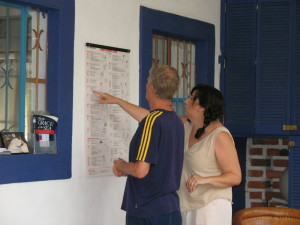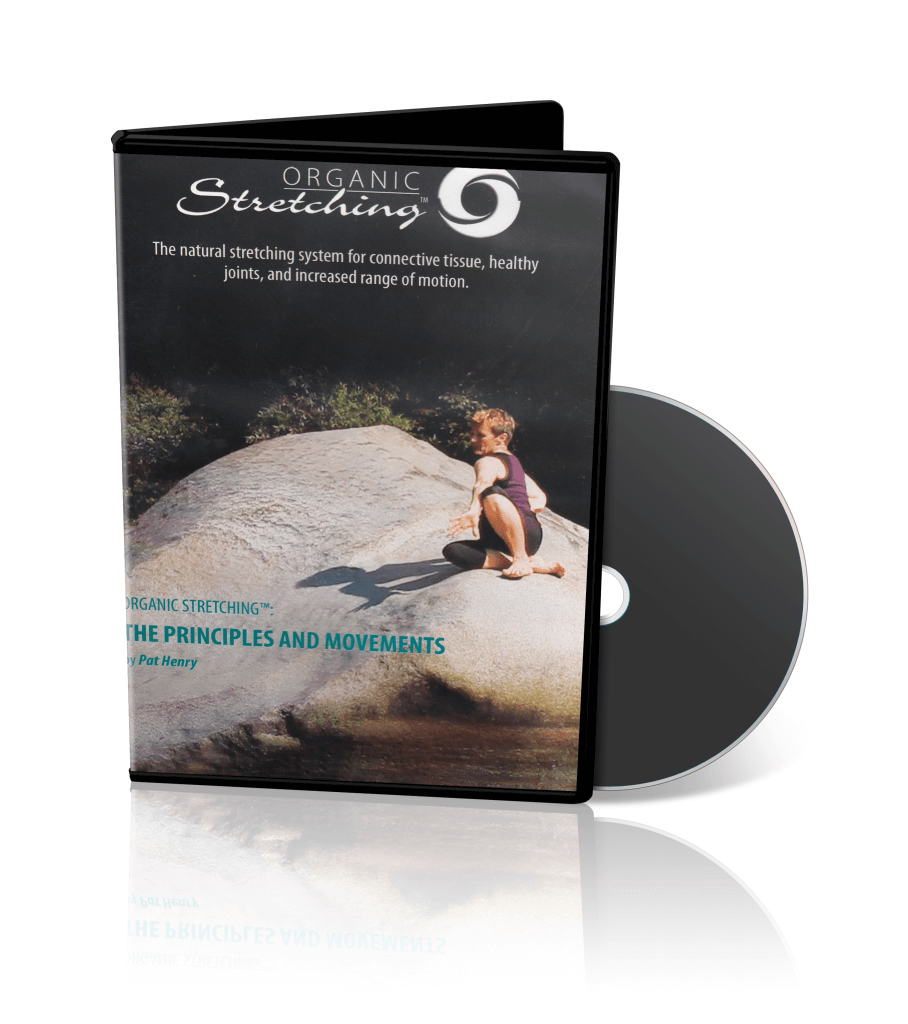
Consulting the charts
Increased range of motion is one of the primary goals in Organic Stretching® along with improving and maintaining the health of the connective tissue system in all its many forms. Students gathered for a bonus class session at my studio in Mexico recently to see how they measured-up after from 6 months to 2-1/2 years of work.
Using the charts prepared by Richard Finn and C.M. Shifflet (available through www.Round-Earth.com), everyone picked a partner to watch for “substitutions,” assist where needed, and take measurements. “Substitutions” are the ways our bodies try to sneak around the edge to make a movement…instead of doing it by the rules, therefore not giving us the information that we are seeking.
Between smiles of delight at reaching a level that wasn’t expected and the sighs of disappointment when something we were sure we could do didn’t happen, it was a valuable experience.
Organic Stretching® uses a general, holistic approach rather than targeting specific sites for focus, but by being aware of the area of manifestation (pain or minimal range) we can pay increased attention to those locations, allowing our bodies to guide us to the source. We may do this by working more slowly and with greater intention and by extending our pauses to allow the gentle shifts in structure that lie at the heart of Organic Stretching®. Those changes may be a softening of fascia, an increased fluidity in the matrix, or subtle changes within joints as restrictions ease.
More sessions will be held in the following months.




The Range of Motion Testing session was a lot of fun. It was also wonderful to find that my range of motion was better than I expected. I am sure that my 2-1/2 years of organic stretching made the difference. I know I could not have done as well before. Besides range of motion, organic stretching has helped my balance and agility, which leads to a better quality of life.
Sylvia, it has been a wonderful experience to share your journey in Organic Stretching.
Range of Motion was indeed “the ultimate test”! It showed how a relatively “fit” person (or even one who looks fit) is not necessarily capable of full ranges of motion. The event was the culmination, for me, of 6 months of twice-a-week stretching sesssions that changed my body from one that was startlingly rigid to one that is relatively ‘pain and stiffness’- free. Now the Range of Motion test has taken me one step further along the path to understanding, and doing something about, the body ‘stiffening’ process that starts as soon as we are told, as children, to sit on a hard chair and not move. Not only that, but, by identifying what is happening when range of motion is reduced, we can work on improving that range. An excellent class!!
Thank you, Richard, for your participation and your observations. Your commitment to the process, both in class and between, has brought outstanding rewards. I wish you continued progress. Pat